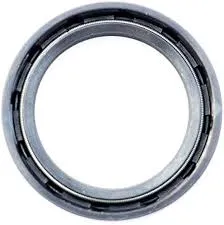7 月 . 29, 2024 18:45 Back to list
The Importance of Choosing Quality Oil Seals for Enhanced Auto Parts Performance and Durability
Understanding Oil Seals in Automotive Parts
Oil seals, also known as shaft seals, play a crucial role in the functionality and longevity of automotive engines and various components. These essential elements are designed to prevent the leakage of lubricants while keeping contaminants out, ensuring that the internal mechanisms operate smoothly. In this article, we will delve into the significance of oil seals in auto parts, their functionality, and how to maintain them for optimal performance.
The Importance of Oil Seals
Oil seals are critical components found in various parts of a vehicle, including the engine, transmission, and differentials. Their primary function is to seal the junction between rotating shafts and stationary parts, ensuring that oil and grease do not leak out and that dirt and moisture do not enter. In doing so, oil seals help maintain the necessary lubrication within the moving parts, which is vital for preventing wear and tear.
In addition to their sealing capabilities, oil seals also help maintain pressure within the system. This is particularly important in parts like the engine, where proper oil pressure is crucial for efficient performance. If an oil seal fails, it can lead to a decrease in lubrication, causing friction, overheating, and ultimately, engine failure.
Types of Oil Seals
Several types of oil seals are available, each designed for specific applications and environmental conditions. The most common types include
1. Single-Lip Seals These are the most basic type, featuring a single sealing lip that contacts the shaft. They are typically used in applications where pressure is not extreme and where environmental exposure is minimal.
auto parts oil seal

2. Double-Lip Seals These seals feature two sealing lips, providing improved protection against contaminants. They are often used in harsh environments or in applications where there is a higher risk of external debris.
3. Spring-Aided Seals These seals incorporate a spring mechanism that helps maintain contact between the lip and the shaft, ensuring a tighter seal. They are commonly used in high-speed applications and where variations in temperature may affect sealing performance.
Maintenance and Replacement
To ensure that oil seals function effectively, regular inspection and maintenance are crucial. Over time, seals can degrade due to factors such as heat, oil exposure, and wear, leading to leaks. Signs of a failing oil seal include oil spots under the vehicle, a drop in oil levels, and noticeable engine noise.
When replacing oil seals, it is essential to choose high-quality components that match the specifications of the vehicle. Using inferior seals can lead to premature failure and additional leaks, resulting in costly repairs. Installation should be performed carefully to avoid damaging the seal during the process. It's recommended to lubricate the seal lip before installation and use the appropriate tools to ensure a proper fit.
Conclusion
In summary, oil seals are vital components in the automotive industry that help maintain the efficiency, reliability, and longevity of various systems in a vehicle. Regular inspection and proper maintenance of oil seals can prevent costly repairs and ensure that your vehicle runs smoothly. When it comes to replacement, always prioritize quality and compatibility to ensure optimal performance. Whether you’re an auto technician or a car enthusiast, understanding the importance of oil seals is key to maintaining your vehicle's health and performance.